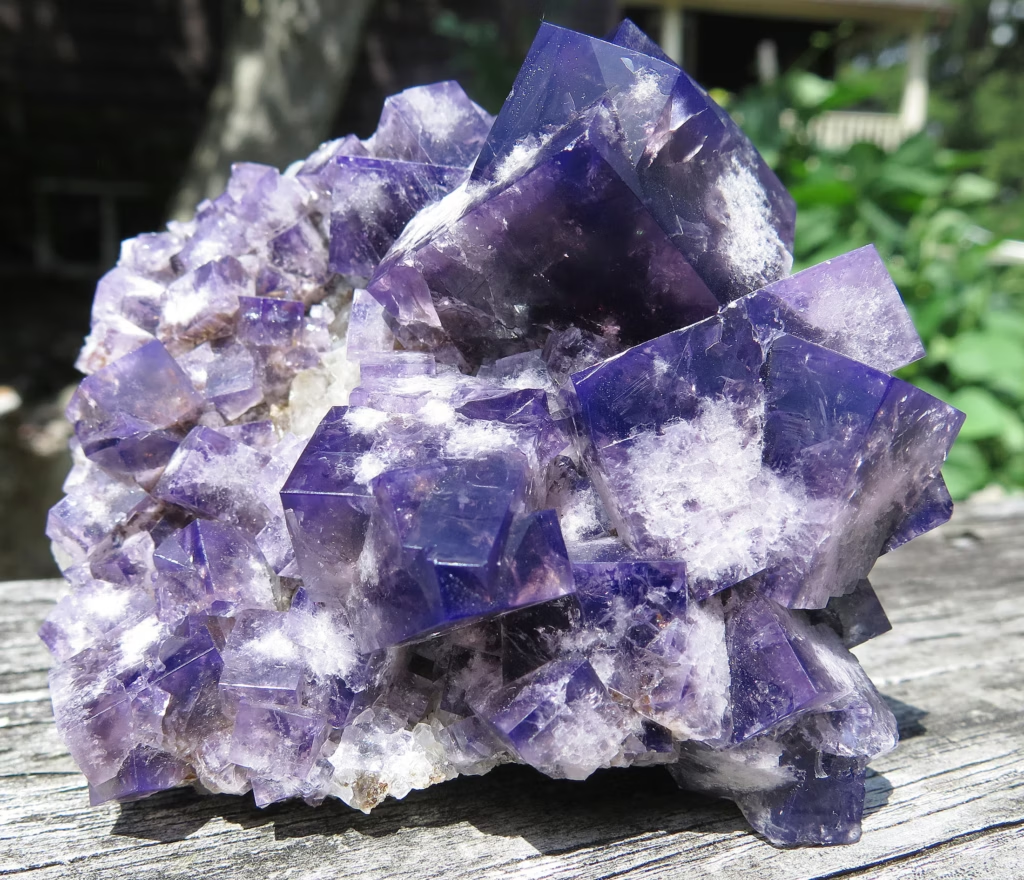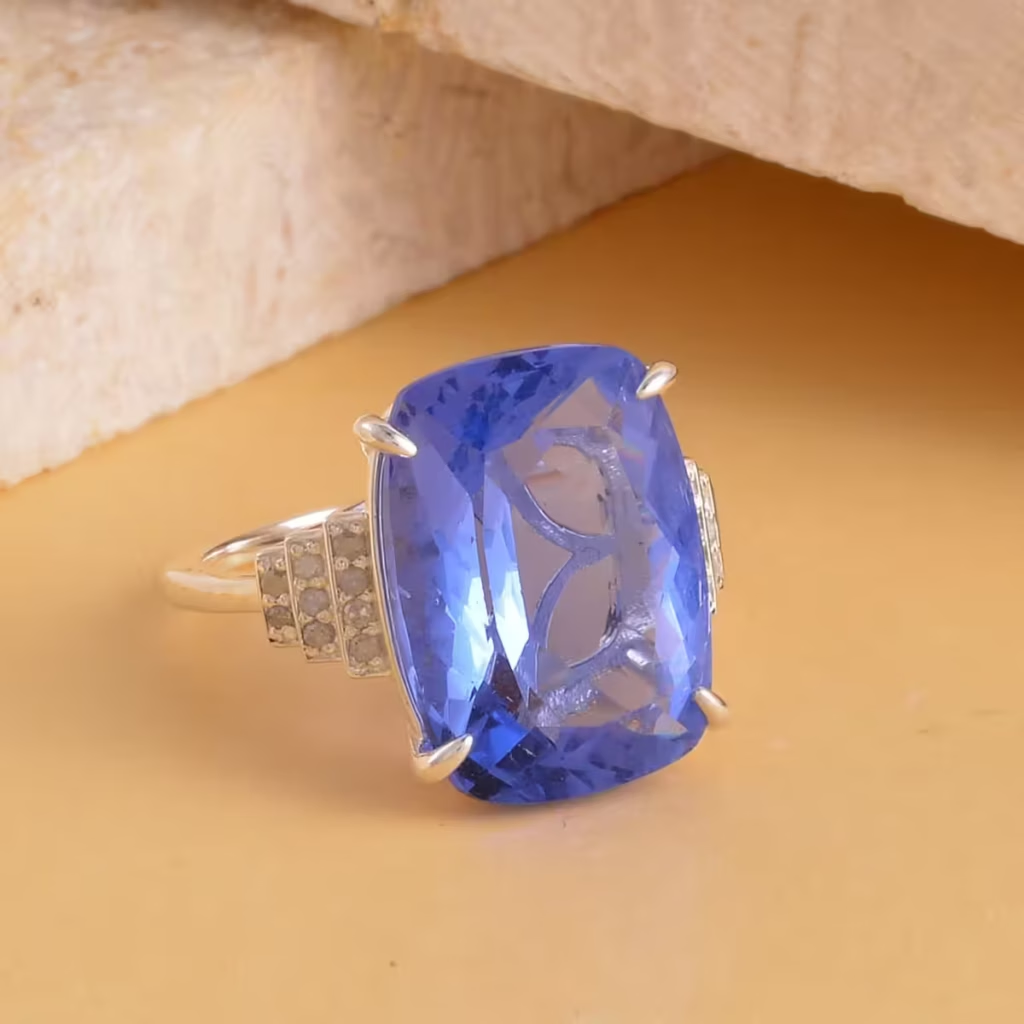Sapphire: The Blue Wonder – Formation, Properties, and Applications
Sapphire, one of the most captivating gemstones, has been cherished for centuries for its mesmerizing blue hue, incredible durability, and symbolic significance. Often associated with wisdom, royalty, and divine favor, sapphires hold a unique place in both historical and contemporary settings. Beyond their aesthetic appeal, these gemstones have found applications in various scientific and industrial fields due to their exceptional physical and chemical properties. This article delves deep into the formation, properties, and applications of sapphire, exploring why this blue wonder remains one of the most sought-after gemstones.

Contents
Formation of Sapphire
Sapphires belong to the corundum mineral family, composed of aluminum oxide (Al₂O₃) with trace elements that influence their coloration. The most famous and valuable sapphires exhibit a deep blue color due to the presence of iron (Fe) and titanium (Ti) within their crystal structure. However, sapphires can also occur in a range of colors, including pink, yellow, green, and even colorless, depending on the trace elements present.

Geological Origins
Sapphires are typically formed in metamorphic and igneous environments, where high pressure and temperature conditions facilitate their crystallization. They are commonly found in:
- Basaltic Rocks: Sapphires can crystallize within basaltic magma and are later transported to the Earth’s surface through volcanic activity.
- Metamorphic Rocks: Some sapphires form in aluminum-rich metamorphic environments, such as schist or gneiss.
- Alluvial Deposits: Over time, erosion and weathering break down primary rock formations, allowing sapphires to accumulate in riverbeds and sedimentary deposits. These secondary sources are often exploited for gemstone mining.
Major Sapphire Deposits

Sapphires are mined in various locations worldwide, with some of the most significant deposits found in:
- Sri Lanka: Renowned for its high-quality blue sapphires and the famous Padparadscha sapphire (a rare pink-orange variety).
- Kashmir, India: Produces some of the most valuable and velvety-textured blue sapphires.
- Myanmar (Burma): Home to some of the finest, deep-blue sapphires with exceptional clarity.
- Madagascar: A relatively new but rich source of sapphires, offering stones of diverse colors.
- Australia: Known for its dark blue to greenish-blue sapphires.
- Thailand and Cambodia: Provide a variety of sapphires, often used in commercial jewelry.
Properties of Sapphire

Sapphire possesses an array of remarkable physical, chemical, and optical properties that make it highly desirable for both gemstone and industrial applications.
Physical and Chemical Properties
- Hardness: Sapphire ranks 9 on the Mohs scale, making it one of the hardest natural substances, second only to diamonds.
- Density: 3.98 – 4.06 g/cm³
- Crystal System: Trigonal (hexagonal crystal structure)
- Refractive Index: 1.76 – 1.78
- Luster: Vitreous to subadamantine
- Cleavage: None, but it exhibits conchoidal and uneven fracture
- Chemical Stability: Highly resistant to acids, heat, and chemical reactions, making it durable in various environments.
Optical Phenomena
Some sapphires display unique optical effects due to inclusions or structural features, including:
- Asterism: Also known as “star sapphire,” this effect creates a star-shaped reflection caused by needle-like rutile inclusions.
- Color Change: Some sapphires exhibit a shift in color under different lighting conditions, from blue in daylight to violet or reddish hues in incandescent light.
- Pleochroism: Many sapphires show different colors when viewed from different angles due to light absorption variations.
Applications of Sapphire

Sapphires are not just prized for their beauty; their durability and optical properties make them highly valuable in numerous industries.
Jewelry and Luxury Goods
The most well-known use of sapphire is in fine jewelry, where it is often cut into faceted gemstones for rings, necklaces, earrings, and bracelets. Sapphires are also frequently used in high-end watches, such as those by Rolex and Patek Philippe, for scratch-resistant watch faces and embellishments.
Scientific and Industrial Uses
- Watch Crystals and Windows: Due to its hardness and scratch resistance, synthetic sapphire is used for durable watch faces and optical windows.
- Electronics and Semiconductors: Sapphire substrates are employed in the production of LEDs (light-emitting diodes) and semiconductor devices, providing excellent thermal and electrical insulation.
- Medical Applications: Sapphire is utilized in laser technology, surgical scalpels, and optical lenses for precision medical instruments.
- Aerospace and Defense: Transparent sapphire windows are used in military-grade optics, bulletproof glass, and space exploration equipment due to their ability to withstand extreme temperatures and pressures.
- Scanning and Reading Devices: Barcode scanners and optical readers often incorporate sapphire components for increased longevity.
Enhancements and Treatments
To improve color and clarity, many sapphires undergo treatment processes such as:
- Heat Treatment: The most common enhancement, used to intensify blue hues and remove undesired inclusions.
- Diffusion Treatment: Involves adding elements like titanium or beryllium to enhance color artificially.
- Fracture Filling: A process where fractures are filled with glass or resin to improve transparency.
Synthetic and Imitation Sapphires
Advancements in gemstone synthesis have led to the production of synthetic sapphires, which are chemically identical to natural ones but grown in laboratories. Common methods include:
- Flame Fusion: The most affordable method, producing synthetic sapphires in large quantities.
- Czochralski Method: Grows high-quality synthetic sapphire crystals, often used in industrial applications.
- Hydrothermal Growth: Mimics natural conditions, creating high-quality sapphires for both gem and scientific purposes.
Imitation sapphires, such as blue glass or spinel, lack the physical properties of true sapphires but are sometimes used as cheaper substitutes in jewelry.
Conclusion
Sapphire remains one of the most revered gemstones due to its stunning beauty, extreme durability, and versatile applications. Whether adorning the crowns of royalty, powering high-tech electronics, or serving as a crucial component in aerospace engineering, this blue wonder continues to captivate the world. As scientific advancements push the boundaries of synthetic sapphire production, the gemstone’s role in technology and industry will likely expand, further cementing its place as a symbol of brilliance and innovation.


























































































